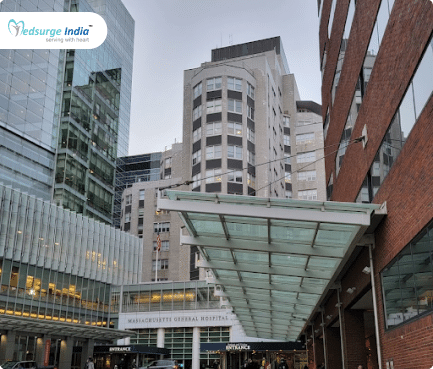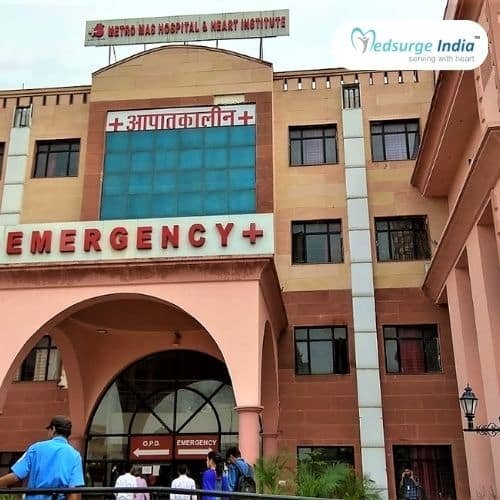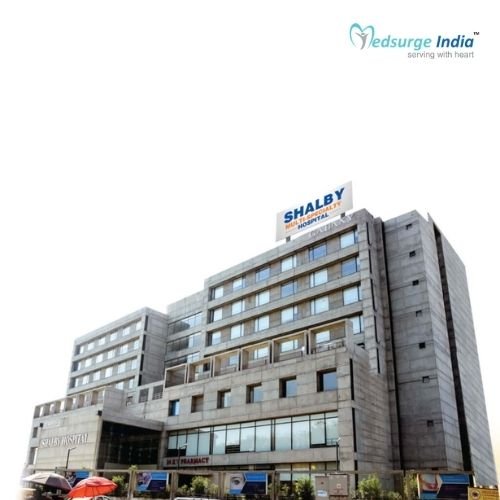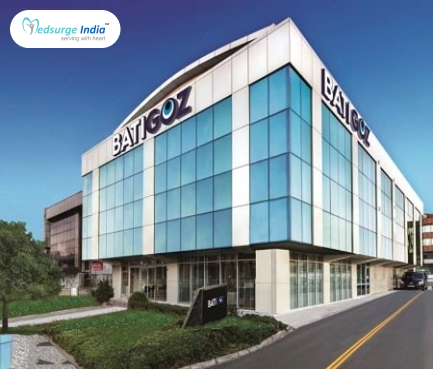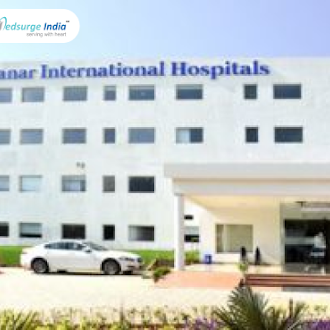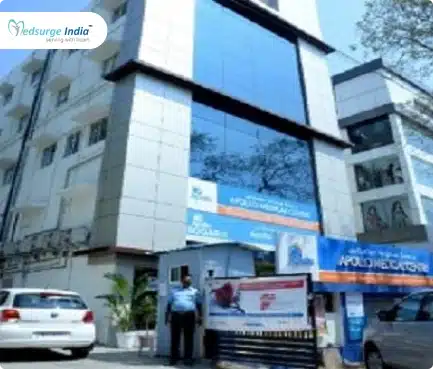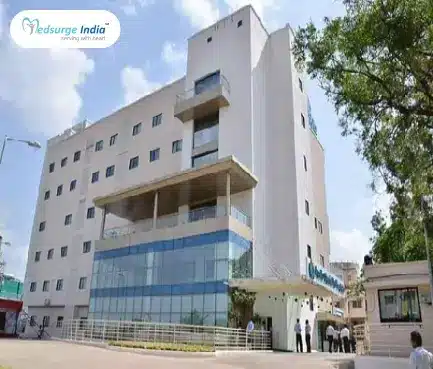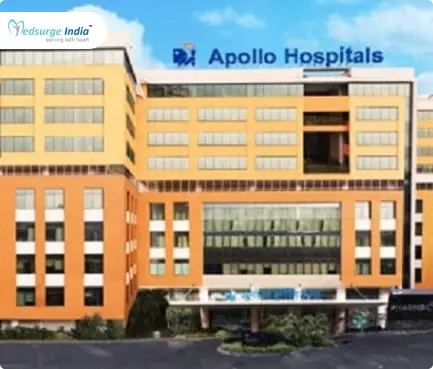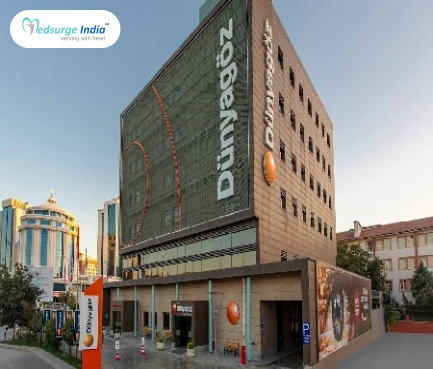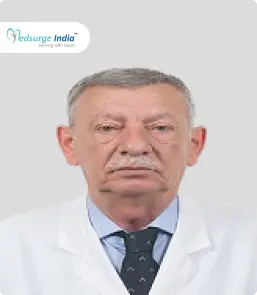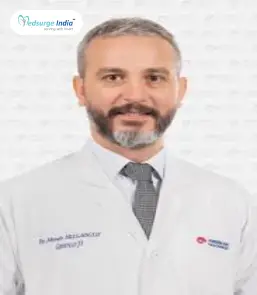
Prostatectomy Cost in Turkey
Prostatectomy cost in Turkey starts from 5000 USD to 15,000 USD depending on the specific procedure and factors like hospital and surgeon. For example, a radical prostatectomy (removal of the entire gland) for prostate cancer can cost between 15,000 USD to 30,000 USD. Prostatectomy for benign prostatic hyperplasia (BPH) can range from 15,000 USD to 28,000 USD.
Types of Procedures for Prostatectomy Cost in Turkey
- Transurethral resection of the prostate (TURP): Starts from 12,000 USD to 25,000 USD.
- Transurethral incision of the prostate (TUIP): Starts from 13,500 USD to 27,000 USD.
- Radical prostatectomy: Starts from 13,000 USD to 26,000USD.
- Robotic-assisted prostatectomy: Starts from 13,000 USD to 28,000 USD.
Factors That Can Affect Prostatectomy Cost in Turkey
The cost of prostatectomy in Turkey can vary based on several factors, including:
- Surgeon’s skill: The level of expertise and experience of the surgeon can affect the total cost of prostatectomy in Turkey.
- Type of surgery: The specific surgical method used whether open, laparoscopic, or robotic can influence the overall expenses of prostatectomy in Turkey.
- Healthcare facility: The cost of prostatectomy may vary depending on the healthcare facility, considering its location and accreditation.
- Pre- and post-operative expenses: These costs may include imaging and lab tests, medications, and any required implants.
- Length of hospital stay: A longer hospital stay can lead to higher charges for accommodations, nursing care, and post-operative monitoring.
- Treatment location: The city where the surgery is performed can also impact the overall cost of prostatectomy in Turkey.
- Medical diagnosis: The particular condition being treated, such as prostate cancer or benign prostatic hyperplasia (BPH), can affect pricing.
- Follow-up care: Costs associated with follow-up visits can add to the total expense of the prostatectomy in Turkey.
- Anesthesia costs: Fees for anesthesia and the anesthesiologist can also influence the overall financial requirement for the procedure.
What is Prostatectomy?
Prostatectomy refers to the surgical removal of the prostate gland and is primarily employed in the treatment of localized prostate cancer. This procedure is vital as it aims to eliminate all affected tissues, thereby reducing the likelihood of recurrence and potentially curing patients whose cancer has not spread beyond the prostate. Various surgical techniques are available, including open radical surgery, laparoscopic surgery, and robotic-assisted laparoscopic prostatectomy. These methods enhance precision and typically result in shorter recovery times, along with fewer complications and risks.
In addition to extending survival rates, prostatectomy alleviates symptoms such as urinary obstruction, significantly improving the patient’s quality of life. Ongoing follow-up care for patients is essential to monitor for complications and ensure comprehensive cancer management.
Who Should Consider a Prostatectomy?
Medical professionals often recommend radical prostatectomy for men and individuals assigned male at birth (AMAB) diagnosed with localized prostate cancer.
Moreover, a healthcare provider may suggest a simple prostatectomy in cases where conditions like benign prostatic hyperplasia (BPH) are causing urethral obstruction, which affects urination.
What are the Different Types of Diagnosis Test?
Following are the different types of diagnostic test as these tests help doctors confirm the diagnosis, plan the surgery, and check the overall health of the patient.
- Prostate-Specific Antigen (PSA) Test
- Digital Rectal Exam (DRE)
- Prostate Biopsy
- Transrectal Ultrasound (TRUS)
- Magnetic Resonance Imaging (MRI)
- CT Scan or Bone Scan
- Urodynamic Tests
- Cystoscopy
- Blood Tests and ECG.
What are the Different Types of Prostatectomy Procedures?
Prostatectomy procedures are performed to address prostate cancer and other conditions affecting the prostate gland. The primary types of prostatectomy include:
1) Radical Prostatectomy:
Open Radical Prostatectomy: This conventional method entails a large incision in the lower abdomen to excise the prostate gland along with some adjacent tissues. Although it provides direct access to the prostate, this approach typically results in a longer recovery time.
Laparoscopic Radical Prostatectomy: This technique is less invasive, utilizing small incisions and a laparoscope, which is a camera that allows for visualization during the procedure. It generally leads to reduced postoperative discomfort, a shorter hospital stay, and a quicker recovery compared to open surgery.
Robotic-Assisted Laparoscopic Prostatectomy: This advanced laparoscopic technique employs robotic instruments to enhance surgical precision. The use of robotic arms, controlled by the surgeon, offers increased flexibility and accuracy, improving surgical outcomes and recovery times.
Simple Prostatectomy: This procedure is primarily used for benign prostatic hyperplasia, a condition characterized by the enlargement of the prostate gland. It involves the removal of only the part of the prostate that obstructs urine flow. Techniques for simple prostatectomy can include open surgery, laparoscopy, and robotic-assisted methods.
2) Transurethral Resection of the Prostate (TURP):
TURP is a commonly performed surgical procedure for patients suffering from benign prostatic hyperplasia (BPH). In this technique, a resectoscope is inserted through the urethra to remove the portion of the prostate that is obstructing the urinary tract. This method is minimally invasive, requiring minimal skin incisions, which contributes to a shorter recovery time.
Each type of prostatectomy offers distinct advantages and is indicated based on the patient’s overall health and the surgeon’s expertise. It is essential for patients to consult with their healthcare provider to determine the most appropriate procedure for their specific situation.
3) Transurethral Incision of the Prostate (TUIP):
Transurethral incision of the prostate (TUIP) is a minimally invasive surgical option aimed at relieving urinary symptoms caused by an enlarged prostate.
In this procedure, a surgeon uses an instrument inserted through the urethra to make one or two incisions in the prostate and bladder neck. This reduces pressure on the urethra, improving urine flow. Patients typically can go home on the same day, although some may need to stay overnight. A catheter is usually placed to drain the bladder for about 1 to 2 weeks. Most individuals can return to their regular activities within approximately 3 to 5 weeks, though full recovery may take longer.
Also Read:- Top 10 Urologists in Turkey
Risk
Every surgical procedure carries inherent risks. Specific risks associated with a prostatectomy include:
- Risks related to anesthesia.
- Complications during the healing process.
- Potential requirement for a blood transfusion.
- Risk of infection.
- Formation of a hematoma (a mass of clotted blood).
- Development of blood clots.
A Note From Medsurge India
At Medsurge India, we understand that undergoing a prostatectomy is a major decision, and we are here to support you every step of the way. Our goal is to connect you with top urology specialists and accredited hospitals in Turkeyt that offer advanced surgical techniques, including minimally invasive and robotic-assisted procedures. With personalized care, transparent pricing, and end-to-end assistance from medical consultations to travel and recovery—Medsurge India ensures that your treatment journey is safe, smooth, and successful. Your health and peace of mind are our top priorities.
Get Free Cost Estimation
The Most Important Frequently Asked Questions
Q: Is a prostatectomy considered a major surgery?
A: A radical prostatectomy is classified as a significant surgical procedure and may lead to various side effects. For older men diagnosed with slow-growing prostate cancer, this surgery might not be necessary. In such cases, the cancer may progress so slowly that the individual is more likely to pass away from natural causes or other health issues rather than from prostate cancer itself.
Q: Can prostate cancer recur after removal?
A: Prostate cancer can indeed return: within the prostate gland if surgery to remove it has not been performed; in the region where the prostate was located if surgery has been done; or in the surrounding areas adjacent to the prostate.
Q: What is the Recovery Time After a Prostatectomy?
A: The recovery period after a prostatectomy generally spans from four to six weeks. Patients can arrange follow-up visits approximately four weeks post-surgery. However, it is important to note that recovery times can differ from person to person.
Q: Is There Pain Associated with a Prostatectomy?
A: Patients do not experience pain during the prostatectomy procedure due to the use of general anesthesia. After the surgery, some may encounter mild pain or discomfort, which can be effectively managed with medication.
Q: When is a Prostatectomy Indicated?
A: A prostatectomy is often necessary for treating prostate cancer and other serious conditions affecting the prostate gland, such as benign prostatic hyperplasia (BPH). This procedure is warranted when these conditions lead to significant symptoms that cannot be managed through less invasive treatments.
Top Hospitals for Prostatectomy in Turkey
Top Doctors for Urology Treatment
Dr. Abdulkadir Hills
Consultant
Experience: 14 years of experience
Kolan International Hospital, Istanbul
Istanbul, Turkey
Dr. Engin Bazmanoglu
Principal Consultant
Experience: 22 years of experience
American Hospital, Istanbul
Istanbul, Turkey
Spec. Dr. Basri Çakıroğlu
Consultant
Experience: 34 years of experience
Hisar Hospital Intercontinental, Istanbul
Istanbul, Turkey
Dr. Murat Binbay
Consultant
Experience: 15 years of experience
Memorial Hospitals Group, İstanbul
Istanbul, Turkey
Dr. Mehmet Remzi Erdem
Consultant
Experience: 11 years of experience
Private Duygu Hospital
Istanbul, Turkey
Dr. Mehmet Erkan Erbay
Professor
Experience: 28 years of experience
Okan University Hospital, Tuzla
Istanbul, Turkey
Dr. Mustafa Yektaoglu
Consultant , Post Graduation, Graduation
Experience: 22 years of experience
Kolan International Hospital, Istanbul
Istanbul , Turkey
Dr. Murat Zor
Consultant
Experience: 23 years of experience
Kolan International Hospital, Istanbul
Istanbul, Turkey
Dr. Murat Bagisgil
Consultant
Experience: 19 years of experience
Medical Park Group, Istanbul
Istanbul, Turkey
Prof. Dr. Fatih Kurtulus
Professor
Experience: 24 years of experience
Medistanbul Hospital, Istanbul
Istanbul, Turkey
M.D. Burak Koçak
Professor
Experience: 15 years of experience
KOC University Hospital, Istanbul
Istanbul, Turkey
Dr. Ilhami Gulluoglu
Consultant
Experience: 17 years of experience
Istinye University Medical Park Gaziosmanpasa Hospital, Turkey
Istanbul, Turkey
Dr. Zeynep Yılmaz
Consultant
Experience: 20 years of experience
Anadolu Medical Center, Kocaeli, Istanbul
Istanbul, Turkey
Dr. Murat Beksan
Consultant
Experience: 12 years of experience
Private Millet Hospital
Istanbul, Turkey
Dr. Vahit Güzelburç
Consultant
Experience: 11 years of experience
Medipol University Hospital, İstanbul
Istanbul, Turkey
M.D. Emre Arpali
Professor
Experience: 10 years of experience
KOC University Hospital, Istanbul
Istanbul, Turkey
Dr. Omer Aytac
Senior Consultant
Experience: 20 years of experience
Kolan International Hospital, Istanbul
Istanbul, Turkey
Prof. Dr. Remzi Saglam
Senior Consultant
Experience: 42 years of experience
Medicana International Ankara
Istanbul, Turkey
Dr. Ahmet Musaoglu
Senior Consultant
Experience: 18 years of experience
American Hospital, Istanbul
Istanbul, Turkey





